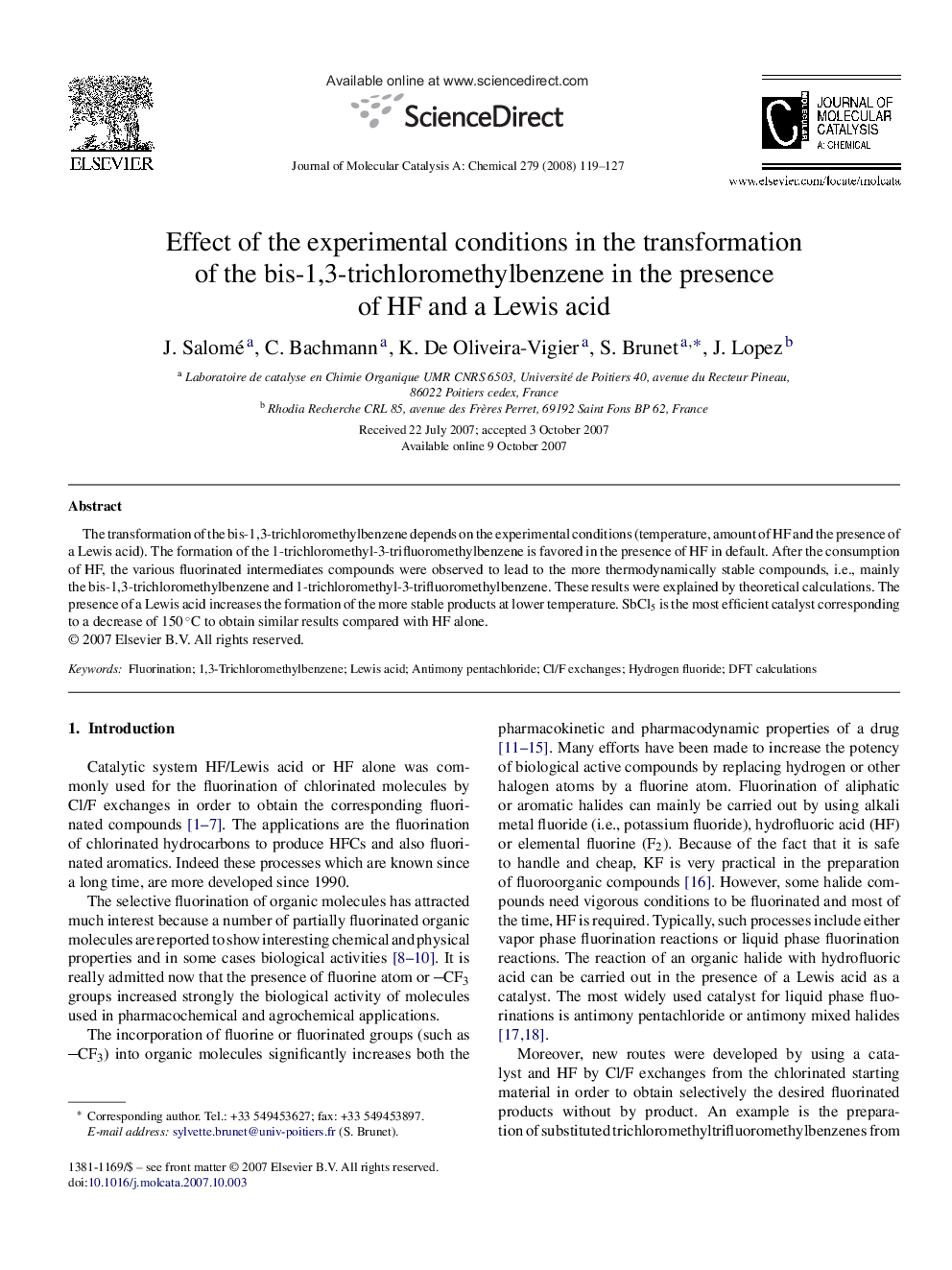| Article ID | Journal | Published Year | Pages | File Type |
|---|---|---|---|---|
| 67433 | Journal of Molecular Catalysis A: Chemical | 2008 | 9 Pages |
The transformation of the bis-1,3-trichloromethylbenzene depends on the experimental conditions (temperature, amount of HF and the presence of a Lewis acid). The formation of the 1-trichloromethyl-3-trifluoromethylbenzene is favored in the presence of HF in default. After the consumption of HF, the various fluorinated intermediates compounds were observed to lead to the more thermodynamically stable compounds, i.e., mainly the bis-1,3-trichloromethylbenzene and 1-trichloromethyl-3-trifluoromethylbenzene. These results were explained by theoretical calculations. The presence of a Lewis acid increases the formation of the more stable products at lower temperature. SbCl5 is the most efficient catalyst corresponding to a decrease of 150 °C to obtain similar results compared with HF alone.
Graphical abstractThe transformation of the bis-1,3-trichloromethylbenzene depends on the experimental conditions (temperature, amount of HF and Lewis acid). The formation of the 1-trichloromethyl-3-trifluoromethylbenzene is favored in the presence of HF in default. The presence of a Lewis acid increases the formation of the more stable products at lower temperature.Figure optionsDownload full-size imageDownload as PowerPoint slide
